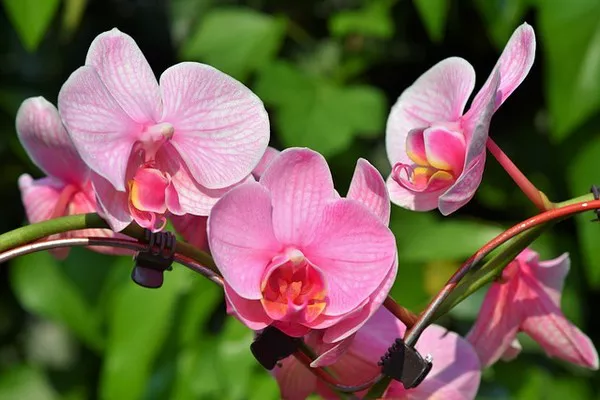Orchids, with their delicate beauty and diverse array of species, have captured the hearts of botanists and enthusiasts alike for centuries. However, for many orchid owners, coaxing these exotic plants to bloom can feel like an elusive endeavor. Fear not, for with the right knowledge and care, you can cultivate a thriving orchid that bursts into glorious bloom year after year. In this comprehensive guide, we will delve into the intricacies of orchid flowering, exploring the key factors that influence blooming and providing actionable tips to help you achieve floral success.
Understanding Orchid Flowering: A Primer
Before diving into the specifics of how to encourage your orchid to bloom, it’s essential to understand the natural processes that govern flowering in these captivating plants. Orchids, belonging to the family Orchidaceae, are renowned for their unique reproductive strategies, which often involve intricate interactions with pollinators in their native habitats. Unlike many other flowering plants, orchids typically produce flowers that are bilaterally symmetrical, with complex structures adapted to attract specific pollinators.
In their natural environments, orchids have evolved to bloom in response to various environmental cues, including light, temperature, humidity, and seasonal changes. Understanding these natural triggers is crucial for replicating optimal growing conditions in a home or greenhouse setting. Additionally, it’s essential to recognize that different orchid species may have distinct flowering requirements, so familiarizing yourself with the specific needs of your orchid is key to success.
Essential Factors for Orchid Flowering
Light: Adequate light is essential for orchid growth and flowering. Most orchids thrive in bright, indirect light, similar to the conditions found under the canopy of a tropical forest. However, the ideal light intensity can vary depending on the orchid species. In general, orchids with thick, leathery leaves can tolerate higher light levels, while those with thinner leaves may prefer slightly lower light.
Temperature: Orchids are sensitive to temperature fluctuations, and many species have specific temperature requirements for flowering. While some orchids prefer cooler temperatures to initiate blooming, others thrive in warmer conditions. Understanding the temperature preferences of your orchid and providing appropriate thermal gradients can stimulate flowering.
Humidity: Orchids are typically native to humid environments, and maintaining adequate humidity levels is crucial for healthy growth and flowering. In drier climates or indoor environments with low humidity, using a humidifier or placing the orchid on a humidity tray can help create a more suitable microclimate.
Watering and Moisture: Proper watering is essential for orchid health and flowering. Overwatering can lead to root rot, while underwatering can cause dehydration and hinder blooming. Orchids generally prefer a moist but well-draining growing medium, such as orchid bark or sphagnum moss. Watering frequency may vary depending on factors such as temperature, humidity, and the type of orchid.
Nutrition: Providing adequate nutrition is vital for orchid flowering. While orchids are relatively low-maintenance compared to some other plants, they still require essential nutrients to support healthy growth and blooming. Fertilizing regularly with a balanced orchid fertilizer during the growing season can help ensure that your orchid has the nutrients it needs to produce vibrant flowers.
Practical Tips for Orchid Flowering Success
Now that we’ve explored the fundamental factors that influence orchid flowering, let’s delve into some practical tips to help you maximize blooming potential:
Choose the Right Orchid: Selecting the right orchid species for your growing environment is essential for success. Some orchids, such as Phalaenopsis and Dendrobium, are relatively forgiving and well-suited to indoor cultivation, making them ideal choices for beginners. Research the specific requirements of different orchid species before making a purchase.
Provide Adequate Light: Place your orchid in a location where it will receive the appropriate amount of light for its species. Indirect sunlight near a north or east-facing window is often ideal for many orchids. Avoid placing orchids in direct sunlight, as this can cause leaf burn.
Monitor Temperature and Humidity: Maintain stable temperature and humidity levels to mimic the orchid’s natural habitat. Use a thermometer and hygrometer to monitor environmental conditions, especially if growing orchids indoors or in a controlled environment.
Water Wisely: Water your orchid thoroughly when the growing medium is dry to the touch, but avoid letting it sit in standing water, as this can lead to root rot. Use room temperature water to avoid shocking the roots, and consider using a watering schedule based on the orchid’s specific needs.
Provide Proper Ventilation: Orchids benefit from good air circulation, which helps prevent fungal diseases and encourages healthy growth. Use fans or open windows to ensure adequate ventilation, especially in enclosed growing spaces.
Watch for Signs of Stress or Disease: Monitor your orchid regularly for signs of stress, such as yellowing leaves, wilting, or pests. Address any issues promptly to prevent them from affecting flowering.
Be Patient and Persistent: Orchids can be slow to bloom, especially if they are adjusting to a new environment or recovering from stress. Be patient and consistent in your care routine, and don’t be discouraged if your orchid doesn’t flower right away.
Conclusion
By implementing these tips and strategies, you can create an optimal growing environment for your orchid and increase the likelihood of a bountiful bloom. Remember that each orchid is unique, and experimentation may be necessary to determine the best approach for your specific plant. With patience, dedication, and a bit of horticultural know-how, you can unlock the secrets to orchid flowering and enjoy the beauty of these enchanting plants for years to come.


